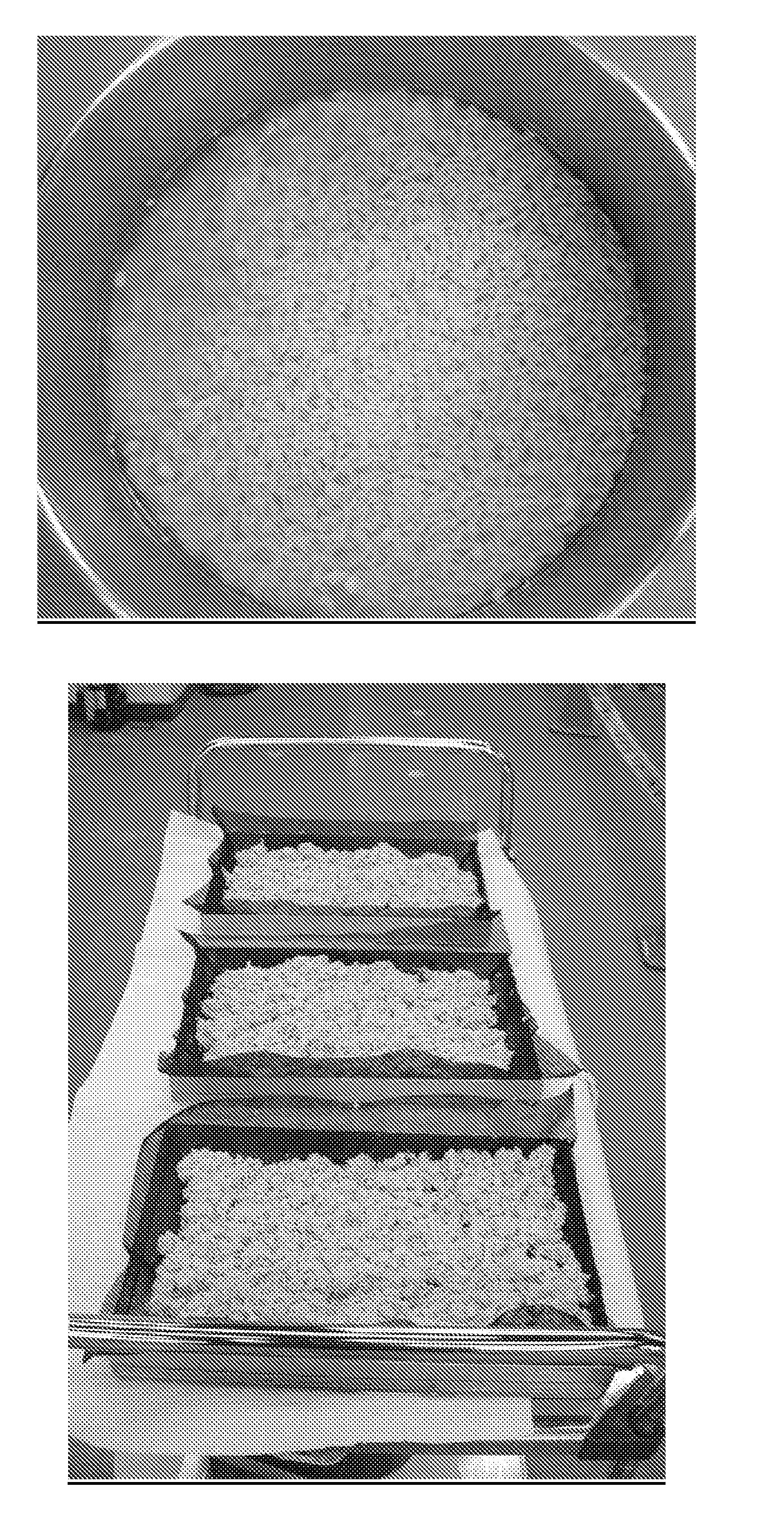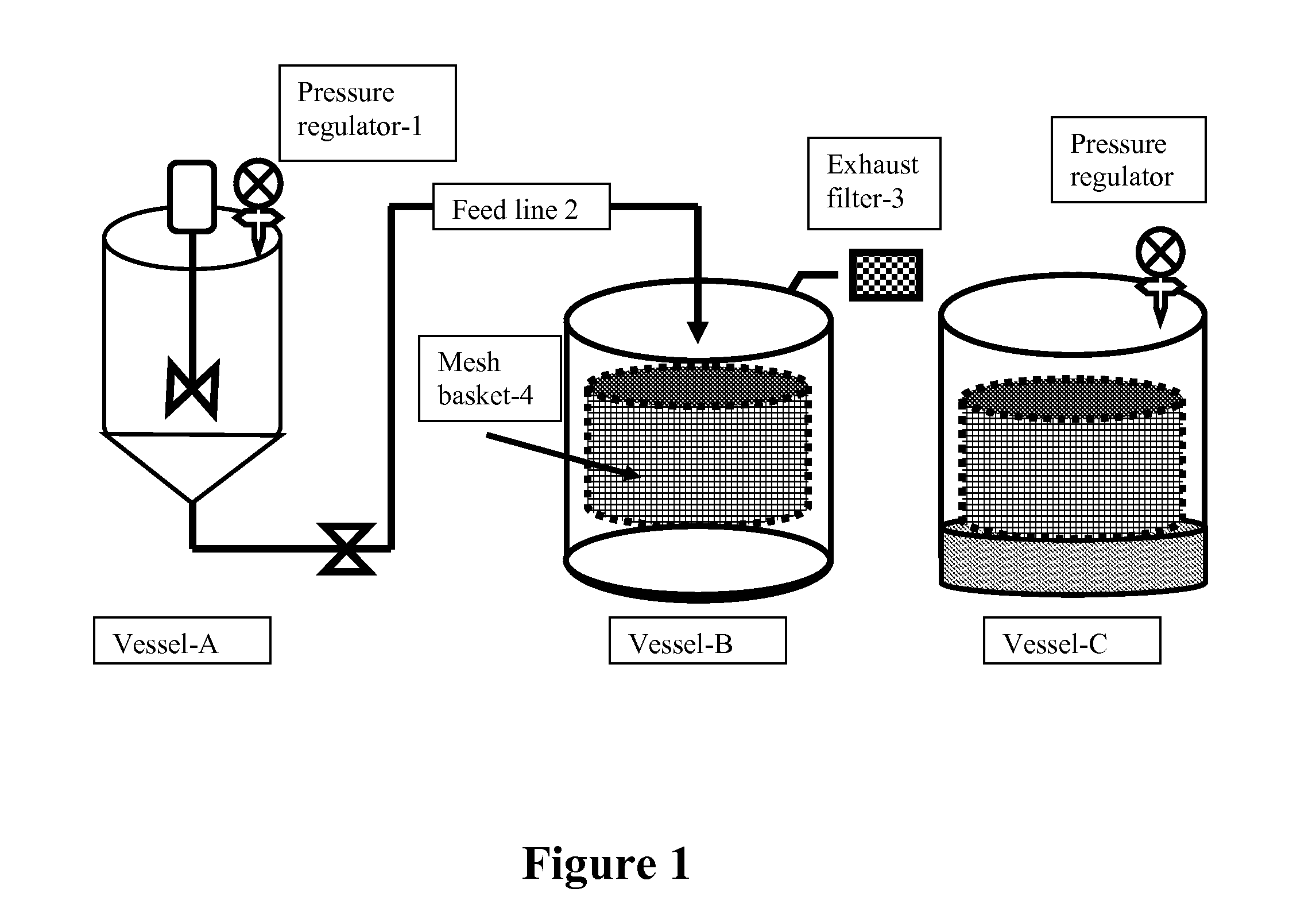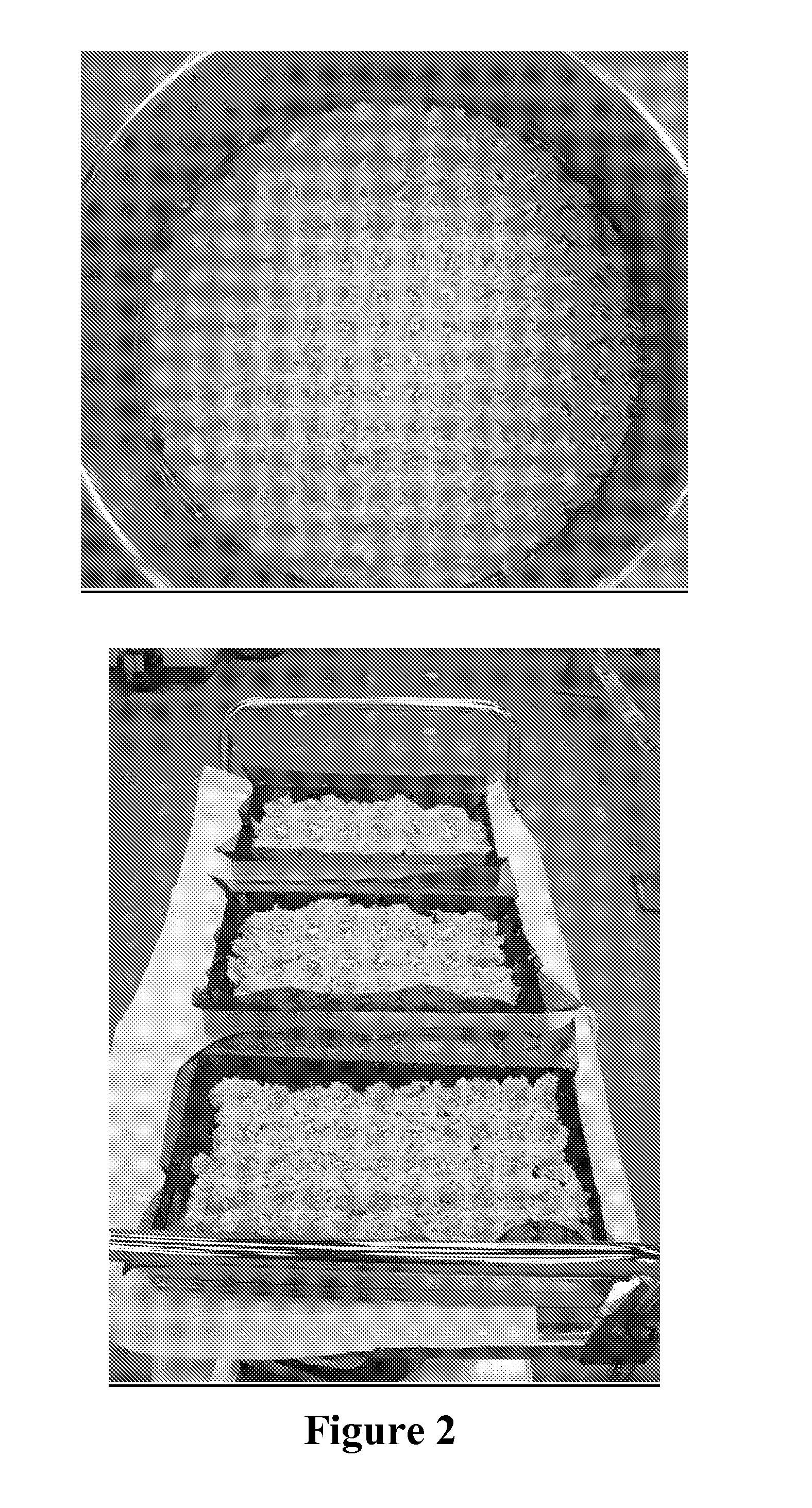Microparticulated vaccines for the oral or nasal vaccination and boostering of animals including fish
a microparticulate and vaccine technology, applied in the field of encapsulated vaccines, can solve the problems of inability to induce an appropriate immunogenic response, inconvenient orally delivered bacterins or subunit vaccines, and ineffectiveness of oral or nasal vaccinations, and achieve excellent thermo-stability of encapsulated ingredients and stabilization of sensitive bioactives
- Summary
- Abstract
- Description
- Claims
- Application Information
AI Technical Summary
Benefits of technology
Problems solved by technology
Method used
Image
Examples
example 1
Production of Mucoadhesive Polymer Particles
[0054]In a 400 L airtight steam jacketed stainless steel vessel, 180 L of sterile distilled water is added and warmed to 50° C. Three L of glacial acetic acid is carefully added (with mixing) to 17 liters of distilled water in an open flame hood. The diluted acetic acid solution is then slowly added to the distilled water in the steam jacketed stainless steel tank. Chitosan (4 kg high viscosity chitosan, Sigma, St. Louis, Mo.) is slowly added to the warmed acetic acid solution under a vigorous homogenizing (10,000 RPM) until completely dissolved. The chitosan solution is cooled to room temperature and the pH adjusted to 6.2 with 50% sodium hydroxide solution. Liquid soy lecithin (6 kg, Archer-Daniels-Midland Co., Decatur, Ill.) is added to the chitosan solution and the solution emulsified for 15 minutes under vigorous homogenization (10,000 RPM).
[0055]A solution of bacterin containing 5 million injectable doses is added to the chitosan slu...
example 2
Production of Mucoadhesive Polymer Particles Using High Fructose Corn Syrup (HFCS)
[0057]Hydrogel Particles or strings are prepared as in Example 1. Sterile HFCS solution (Archer-Daniels-Midland Co., Decatur, Ill.) containing 55% fructose is used to saturate the hydrogel particles. 100 L of HFCS solution is added to a 1000 L airtight stainless steel flat bottom vessel and hydrogel particles are allowed to soak in the HFCS for about 30 minutes as described above in example 1. The particles are further dewatered in silica gel and semi-dry hydrogel material containing 20% moisture is obtained following the dehydration procedure described in example 1. The semi-dry hydrogel material is further dried in a fluidized bed drier at 50° C. to achieve a moisture level less than 10%. The resulting dried material is then milled using an industrial hammer mill and the powder is sieved to less than 100-microm-particle size.
example 3
Production of Mucoadhesive Polymer Particles Containing Salmonid Rickettsial Septicaemia (SRS) Vaccine
[0058]The mucoadhesive polymer slurry at pH 6.2 was prepared as described in Example 1. A solution containing attenuated SRS vaccine (5×1017 / ml SRS bacterin) (commercially available from Centrovet, Santiago, Chile) was mixed with yeast extract immunostimulator (500 g beta glucan, AHD International, Atlanta, Ga.) and added into the slurry. The slurry was then injected into 10% w / v sodium triphosphate solution. The hydrogel material was allowed to harden for 2 hour and then saturated with sucrose. It was then further dewatered in silica gel, freeze dried, and milled to particle size lower than 100 micron.
[0059]An Enzyme-Linked ImmunoSorbant Assay (ELISA) was used to validate the presence of intact SRS vaccine in the mucoadhesive polymer particles. The encapsulated SRS vaccine produced above was homogenized in Phosphate-Buffered Saline (PBS) at different pH levels. FIG. 3 shows the opt...
PUM
| Property | Measurement | Unit |
|---|---|---|
| particle size | aaaaa | aaaaa |
| particle size | aaaaa | aaaaa |
| particle size | aaaaa | aaaaa |
Abstract
Description
Claims
Application Information
 Login to View More
Login to View More - R&D
- Intellectual Property
- Life Sciences
- Materials
- Tech Scout
- Unparalleled Data Quality
- Higher Quality Content
- 60% Fewer Hallucinations
Browse by: Latest US Patents, China's latest patents, Technical Efficacy Thesaurus, Application Domain, Technology Topic, Popular Technical Reports.
© 2025 PatSnap. All rights reserved.Legal|Privacy policy|Modern Slavery Act Transparency Statement|Sitemap|About US| Contact US: help@patsnap.com



